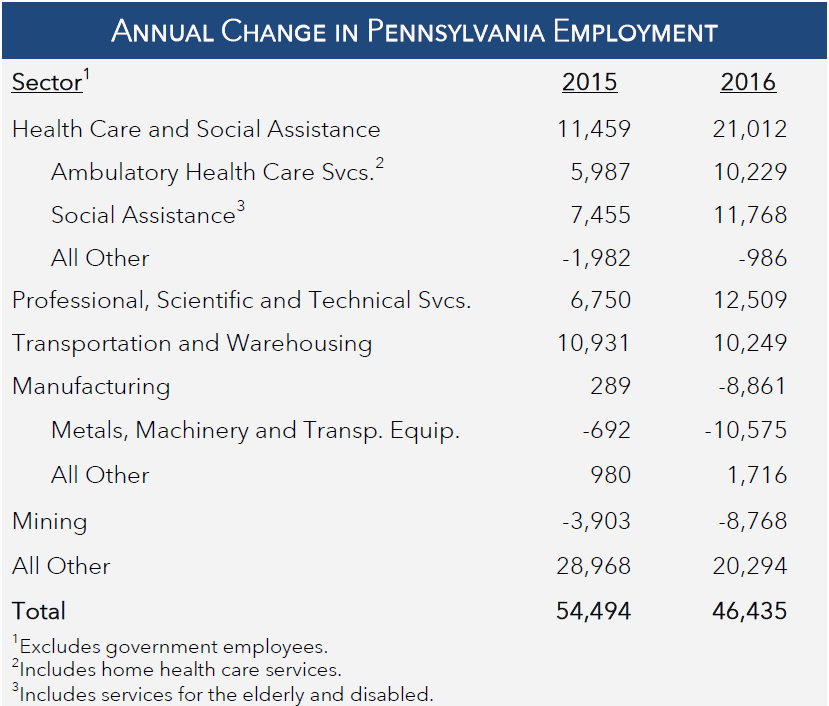June 2017
July 05, 2017 | Revenue & Economic Update

The Quarterly Census of Employment and Wages (QCEW), issued by the U.S. Bureau of Labor Statistics, publishes quarterly data on employment and wages by sector, as reported by employers. In June, state data were released for the fourth quarter of 2016. For calendar year 2016, the data show that the number of jobs in Pennsylvania increased by 46,435, compared to 54,494 in the prior year.[1]
The table below shows the change in Pennsylvania employment for the sectors that recorded the largest gains and contractions in 2016, as well as the change for those sectors in the prior year. The health care sector added the most jobs in 2016 (21,012), nearly double the 2015 employment gain for that sector. The majority of the increase for these two years (73%) was attributable to home health care services and services for the elderly and disabled, which have expanded under the Affordable Care Act.
In contrast, the manufacturing and mining sectors declined by 8,861 and 8,768 jobs, respectively. For manufacturing, the decline was a significant departure from the prior year, which recorded a small net increase. The 2016 decline was largely driven by metal fabrication, machinery and transportation equipment manufacturing, which contracted by 10,575 jobs. Of those losses, the largest decline was recorded for construction and mining equipment (-1,820 jobs).
For mining, employment continued to contract for 2016, albeit at a faster pace than the previous year. The majority of that contraction (71%) was attributable to support activities for mining. In particular, drilling and support operations for oil and gas mining contracted considerably (-5,922 jobs).
The QCEW also publishes data on the average annual wage for each sector (includes part-time and full-time employment). For 2016, the data show that the average annual wage is higher for the manufacturing and mining sectors than for the health care sector. For manufacturing and mining, the average annual wage was $59,788 and $80,463, respectively. In contrast, the average annual wage for the health care sector was $48,121, with home health care services ($36,789) and services for the elderly and disabled ($21,479) being somewhat lower than the average for that sector.
[1] The QCEW data are used to benchmark the monthly Current Employment Statistics (CES) series discussed by various media outlets.